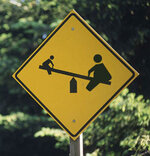Doggyman1202
Active Member
The above quote from Electric Bike Review last year. I'm not "inexperienced or have shifting limitations". In fact, I just take shifting for granted, but enticed by the idea of not having to do so, just as my grandparents were likely stoked when they purchased a 1950's Buick with an automatic "Dynaflow" transmission once upon a time. I'm interested in these Evelo's for the same reason I prefer to drive an automatic instead of a stick shift car. Shifting is distracting.The Enviolo Trekking CVT gear hub and AutomatIQ gear shifter is great for riders who are inexperienced or have shifting limitations – it’s like going from a manual shift car to an automatic one.
As an owner (or possibly future owner) of the Aurora/Omega, were you motivated by "inexperience" or physical limitations"? No right or wrong answer, but I'm interested to see what appeals or doesn't appeal to you about these bikes. In other words, Is the Enviolo Automatiq a "game changer", or do still prefer manual shifting?
Last edited:

